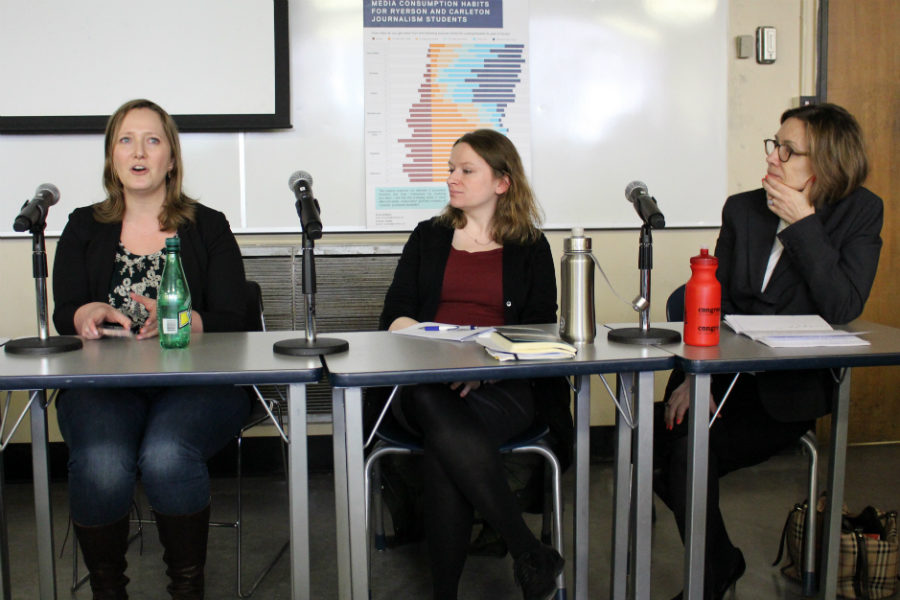Mystery Readers International (MRI) is a haven for those who find joy in unraveling a good whodunit. This global community, founded by Janet A. Rudolph in Berkeley, California, brings together readers, writers, and enthusiasts who share a passion for mystery fiction. But MRI is more than just a book club—it’s a vibrant hub where hobbies, crafts, and special interests intertwine with the love of mysteries, creating a unique space for creative and intellectual exploration. In this article, we’ll dive into how MRI celebrates these passions, offering a rich tapestry of activities and resources for mystery lovers.
What is Mystery Readers International?
Mystery Readers International is the world’s largest mystery fan and reader organization, uniting members across all 50 U.S. states and 18 countries. Founded in 1986, MRI fosters a community where fans, critics, editors, publishers, and writers connect over their shared love for the genre. Its flagship publication, Mystery Readers Journal, explores thematic issues like hobbies and crafts, blending storytelling with niche interests.
This organization doesn’t just stop at reading. It encourages members to engage deeply with mysteries through discussions, events, and even awards like the prestigious Macavity Awards, voted on by members annually. Whether you’re a casual reader or a dedicated sleuth, MRI offers a welcoming space to indulge your curiosity.
The Role of Hobbies in Mystery Fiction
Hobbies in mystery novels aren’t just background noise—they’re often central to the plot, adding depth to characters and stories. From knitting to woodworking, these pastimes provide clues, motives, or even murder weapons. Mystery Readers Journal frequently explores how hobbies shape narratives, as seen in its Hobbies & Crafts in Mysteries issue.
Authors like Agatha Christie, with her knitting sleuth Miss Marple, show how hobbies humanize detectives, making them relatable. A needle and thread can be as revealing as a fingerprint in the right hands. MRI celebrates this intersection, encouraging readers to see hobbies as more than leisure—they’re storytelling tools.
Knitting as a Sleuth’s Sidekick
Miss Marple’s knitting needles are practically a character in Agatha Christie’s novels. As she knits, she observes, her calm demeanor hiding a razor-sharp mind. Mystery Readers Journal highlights how such hobbies ground characters, making their deductions feel authentic.
This craft isn’t just quaint—it’s strategic. Knitting allows Marple to blend into the background, overhearing key conversations. It’s a reminder that hobbies can be powerful narrative devices, a theme MRI explores in its publications.
Culinary Arts in Cozy Mysteries
Food often plays a starring role in cozy mysteries, from baking to brewing espresso. Authors like Camille Minichino, under her pen name Margaret Grace, weave culinary crafts into their stories, as noted in Mystery Readers Journal. A poisoned pastry can be a plot twist as gripping as a locked-room murder.
Cooking in mysteries isn’t just about recipes—it’s about community and motive. MRI’s focus on these themes shows how everyday hobbies can turn deadly, adding flavor to both the story and the reader’s experience.
Crafts That Inspire Mystery Plots
Crafts like dollhouse building or quilting often appear in mystery fiction, offering intricate backdrops for storytelling. Mystery Readers Journal (Volume 39:2) dives into how these hands-on activities spark creativity for both writers and readers. A meticulously crafted dollhouse, for instance, might hide a clue in its tiny furniture.
These crafts appeal to mystery fans because they mirror the genre’s puzzle-solving nature. Just as a sleuth pieces together clues, a crafter assembles a quilt or miniature scene, making these hobbies a perfect fit for the genre.
Dollhouses: Miniature Worlds of Intrigue
Camille Minichino, a contributor to MRI, writes mysteries centered on dollhouses, where tiny details can reveal big secrets. As she notes in Mystery Readers Journal, a dollhouse should look indistinguishable from a real house—until a doll ruins the illusion. This precision mirrors a detective’s attention to detail.
Building a dollhouse requires patience, much like solving a mystery. MRI’s exploration of this craft shows how it captivates readers, offering a tangible way to engage with the genre’s themes.
Quilting Circles and Hidden Clues
Quilting, featured in films like Witness (1985), often appears in mysteries as a communal activity hiding secrets. Mystery Readers Journal notes how quilting circles can be settings for gossip, betrayal, or even coded messages stitched into patterns.
This craft’s repetitive nature allows characters to reflect, much like a detective mulling over evidence. MRI’s focus on quilting highlights its role in cozy mysteries, where community and creativity collide.
Special Interests That Shape Mystery Communities
Beyond hobbies and crafts, MRI nurtures special interests like historical reenactments or vintage typewriter collecting, which often appear in mystery narratives. These niche passions, explored in Mystery Readers Journal (Volume 26:4), add layers to characters and plots, making stories more immersive.
These interests also foster community. MRI members bond over shared obsessions, whether it’s analyzing a detective’s typewriter or debating forensic techniques. It’s this passion that makes MRI a unique space for mystery enthusiasts.
Vintage Typewriters: A Writer’s Clue
Typewriters, featured in MRI’s blog Mystery Fanfare, are more than nostalgic props. In mysteries, the distinct clack of a typewriter key can pinpoint a suspect. Collectors of these machines find joy in their mechanics, much like readers enjoy unraveling a plot.
MRI’s exploration of such interests shows how they enrich the genre. A typewriter’s quirks can be as telling as a character’s alibi, making it a perfect hobby for mystery fans.
Historical Reenactments in Mysteries
Historical mysteries often incorporate reenactments, where characters recreate past events to uncover truths. MRI’s publications highlight how these activities blend research and role-play, appealing to fans who love both history and puzzles.
This interest mirrors the detective’s process—piecing together the past to solve the present. MRI’s community thrives on such connections, encouraging members to explore these intersections.
Why Mystery Readers International Stands Out
MRI isn’t just a fan club; it’s a cultural hub that elevates the mystery genre through its focus on hobbies and crafts. Here’s why it’s a must-join for enthusiasts:
- Global Community: Connect with mystery lovers across 18 countries.
- Thematic Publications: Mystery Readers Journal offers deep dives into niche topics like crafts.
- Macavity Awards: Members vote for the best in mystery fiction, giving you a voice.
- Engaging Events: From virtual discussions to in-person meetups, MRI fosters connection.
Comparing MRI to Other Mystery Organizations
| Feature | Mystery Readers International | Other Mystery Groups |
|---|---|---|
| Membership Reach | Global (50 states, 18 countries) | Often regional |
| Publication Focus | Thematic issues (e.g., hobbies) | General reviews |
| Awards | Macavity Awards (member-voted) | Varies, often none |
| Community Events | Virtual and in-person | Mostly local |
MRI’s global reach and unique focus on themed publications set it apart, making it a leader in the mystery community.
Pros and Cons of Joining MRI
Pros:
- Access to exclusive Mystery Readers Journal issues.
- Opportunity to vote in the Macavity Awards.
- Connect with a global network of mystery enthusiasts.
- Explore niche topics like hobbies and crafts in depth.
Cons:
- Membership fees may deter some readers.
- International shipping for hardcopy journals can be slow.
- Limited in-person events in some regions.
Where to Get Involved with MRI
Ready to join the mystery? Visit Mystery Readers International to sign up for membership or subscribe to Mystery Readers Journal. You can choose digital PDFs for instant access or hardcopies for a tactile reading experience. MRI’s blog, Mystery Fanfare, offers free content to dip your toes into their world.
For local engagement, check MRI’s event listings for virtual discussions or regional meetups. Social media platforms like X also feature active MRI communities where you can connect with fellow fans.
Best Tools for Mystery Hobbyists
To deepen your mystery-inspired hobbies, consider these tools:
- Notebook and Pen: Essential for jotting down clues or sketching dollhouse designs. Try the Moleskine Classic Notebook ($19.99 on Amazon).
- Craft Supplies: For miniature enthusiasts, brands like Miniatures.com offer detailed dollhouse kits starting at $50.
- Reading Apps: Kindle or Libby for accessing digital mysteries on the go.
- Typewriter Repair Kit: For collectors, iFixit’s toolkits ($29.99) help maintain vintage machines.
These tools enhance your engagement with MRI’s themes, blending creativity with sleuthing.
People Also Ask (PAA)
What is Mystery Readers International?
Mystery Readers International is a global organization for mystery fans, offering a community, thematic journals, and awards like the Macavity. It connects readers, writers, and publishers through shared passions.
How do hobbies feature in mystery novels?
Hobbies like knitting, cooking, or dollhouse building often drive plots or reveal character traits in mysteries. They add depth, making stories relatable and engaging, as explored in MRI’s publications.
Where can I subscribe to Mystery Readers Journal?
You can subscribe to Mystery Readers Journal at mysteryreaders.org. Choose between PDF downloads or hardcopy subscriptions for quarterly thematic issues.
What are the Macavity Awards?
The Macavity Awards, voted on by MRI members, honor the best mystery novels, short stories, and nonfiction each year. Nominees for 2025 were recently announced on MRI’s website.
Personal Story: My Journey with MRI
When I first stumbled across Mystery Readers Journal at a local bookstore, I was hooked. As a lifelong mystery fan and amateur quilter, I loved how the journal wove my hobbies into the stories I adored. One issue featured a quilting mystery where a hidden stitch pattern revealed a killer’s motive—mind blown! Joining MRI felt like finding my tribe. I’ve since attended virtual discussions, voted in the Macavity Awards, and even tried my hand at building a dollhouse inspired by Camille Minichino’s series. It’s not just about reading; it’s about living the mystery.
FAQ Section
How do I join Mystery Readers International?
Visit mysteryreaders.org to sign up. Membership includes access to Mystery Readers Journal and voting rights for the Macavity Awards.
Are there free resources from MRI?
Yes, MRI’s blog, Mystery Fanfare, offers free articles and updates on mystery-related hobbies and events. Check it out at mysteryreadersinc.blogspot.com.
Can I contribute to Mystery Readers Journal?
Absolutely! MRI welcomes contributions from authors and fans. Contact them via their website for submission guidelines.
What types of hobbies are featured in MRI’s publications?
Hobbies like knitting, quilting, dollhouse building, and typewriter collecting are often highlighted, reflecting their role in mystery fiction.
Is MRI suitable for new mystery readers?
Yes, MRI caters to all levels, from casual readers to seasoned sleuths, with accessible content and a welcoming community.
Conclusion: Why MRI is Your Mystery Haven
Mystery Readers International isn’t just about reading—it’s about immersing yourself in a world where hobbies, crafts, and special interests bring stories to life. Whether you’re knitting like Miss Marple or building a dollhouse to hide a fictional clue, MRI offers a community that celebrates these passions. Join today, explore Mystery Readers Journal, and let your love for mysteries spark new creative adventures. Who knows? Your next hobby might just solve a fictional crime.



